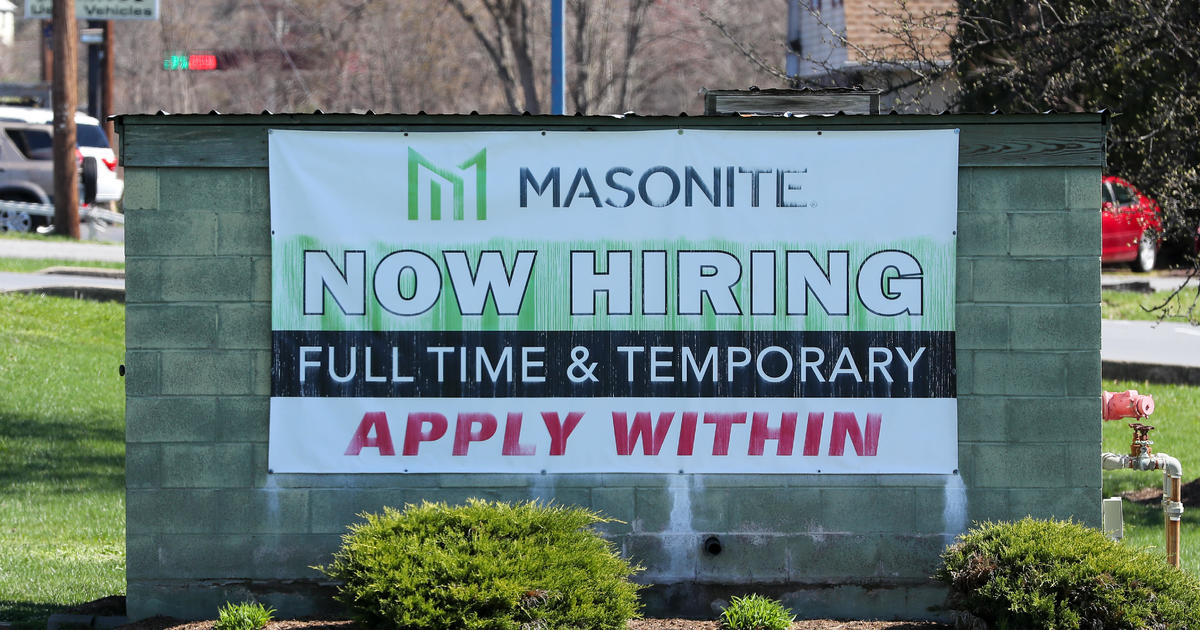Job growth in the U.S. is booming — here’s which industries are leading the rebound
 gettyimages-1232078440
gettyimages-1232078440
https://www.cbsnews.com/news/economic-recovery-hiring-industries/
Good news: The U.S. economy needs workers. Employers hired nearly a million people in March, while layoffs are easing. Job listings are surging, with openings on career site Indeed now topping their pre-coronavirus levels.
So who’s hiring? Construction, manufacturing, warehousing and pharmacy jobs are now in ample supply, the firm’s data shows. “The economy is still all about the pandemic,” said Jed Kolko, chief economist at the Indeed Hiring Lab. “The biggest increase in job postings are those that either help get us through the pandemic or help us get out of the pandemic.”
The hottest jobs sectors are those that “make and move things,” Kolko added. E-commerce, warehouse and delivery jobs, all of which surged during the pandemic, are now growing at an even faster clip. The number of warehouse jobs listed on Indeed as of early April was 57% above what they were before the virus struck.
The fastest-growing jobs on Indeed
Job listings in manufacturing, construction, warehouses and pharmacies have surged above their pre-pandemic levels.
“Consumers are still buying online,” said Amy Glaser, senior vice president at staffing firm Adecco. “Warehouses in the U.S. — we’re seeing from Pennsylvania to Tennessee to California — are hiring right now and are not able to keep up with the hiring demands.”
The rise in the work-from-home economy has also increased demand for driving jobs and work at smaller competitors, said Brannon Lacey, president of PeopleScout, a recruiting company.
“Look at large retailers that are building out online presences to compete with the likes of Amazon and Walmart,” Lacey said. “Grocery delivery has gone up … delivery of everything has gone up. So the same people that were taking jobs and warehouses now have multiple types of opportunities.”
The broader logistics field could add as many as 4.5 million new jobs over the next five years, according to Burning Glass, a labor market analytics firm. Along with front line jobs, like truck drivers, that includes data analysts, software engineers, project managers and other positions required to maintain supply chains, Burning Glass predicted.
Factories need workers
Factories that make goods are going through their own labor pains. Manufacturers laid off fewer workers during the first wave of COVID-19 compared with service industries. Meanwhile, consumer demand for everything from personal protective equipment to vehicles has surged, putting a squeeze on the sector.
The latest survey from the Institute for Supply Management found that factory activity is expanding at its fastest pace in 37 years, and quoted several manufacturers who can’t find jobs.
“A lack of qualified machine and fabrication shop talent makes it difficult to keep up,” said one metal product maker quoted in the report. “Hiring new members is a challenge,” said a transportation equipment maker.
The shortage is leading many employers to offer bonuses or hike starting wages.
“We’ve seen wages raised between $1 and $5 an hour, increased sign-on bonuses, referral bonuses, attendance bonuses,” Adecco’s Glaser said.
Vaccination push drives job growth
The drive to vaccinate people against COVID-19 is also spawning job opportunities in pharmacies and other health care organizations. Across the U.S, more than 1 in 5 job openings at the end of February was in health care and social assistance, according to Labor Department data.
On job site ZipRecruiter, the companies with the most vacancies in March included three health systems — Mercy Health in the Ozarks, Sanford Health in the upper Great Plains and UCHealth in New Jersey — and one health insurer — Anthem.
Pharmacies are also staffing up. Walgreens is looking to fill 9,500 full- and part-time jobs in its retail stores to help with the vaccine rollout, while CVS is looking to add 50,000 more jobs. In addition to nurses, pharmacists and pharmacy assistants, open jobs include customer service or patient care roles that don’t require medical licensing.
Meanwhile, some cities including New York are recruiting a “vaccine corps” of medical and non-medical workers to encourage residents to get vaccinated and help them through the process.
Some industries still hurting
With 8 million fewer workers on payrolls today than before the pandemic, it’s hard to imagine employers having trouble finding applicants. But the industries growing today don’t neatly match up with those that were hit hardest last year. The hospitality sector, for instance, is still down nearly 3 million jobs since last March. Unemployed hotel cooks and housekeepers likely couldn’t pick up a job as a factory welder without some additional training.
While job listings in the industry have increased from last year’s plunge, they are still below pre-pandemic levels, according to Indeed’s data.
Listings lag in these 4 sectors
Job listings in education, IT operations, beauty and hospitality have yet to regain pre-pandemic levels.
Timing is also a factor. Many people who were forced out of jobs last year are still unable to take on work for personal or family reasons, said Indeed’s Kolko.
“We’re at a point where there’s been a more sudden increase in labor demand than in labor supply,” he said. “Many schools and daycares aren’t fully reopened, and that’s a huge burden, especially on mothers.”
Other workers may still be worried about contracting the coronavirus, especially in the front line jobs that are doing the most hiring.
“All of those reasons are temporary reasons,” Kolko noted. “But the timing of when employers want to hire and when people are ready to start might be out of sync in the near term.”

Professional Recruiter Associates